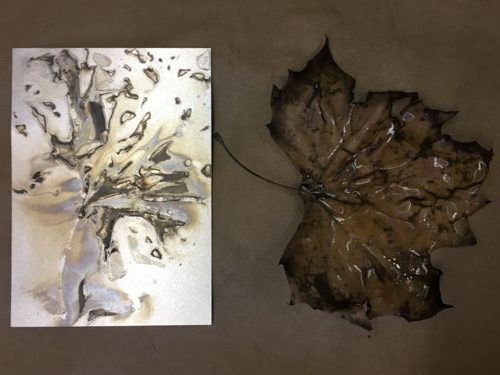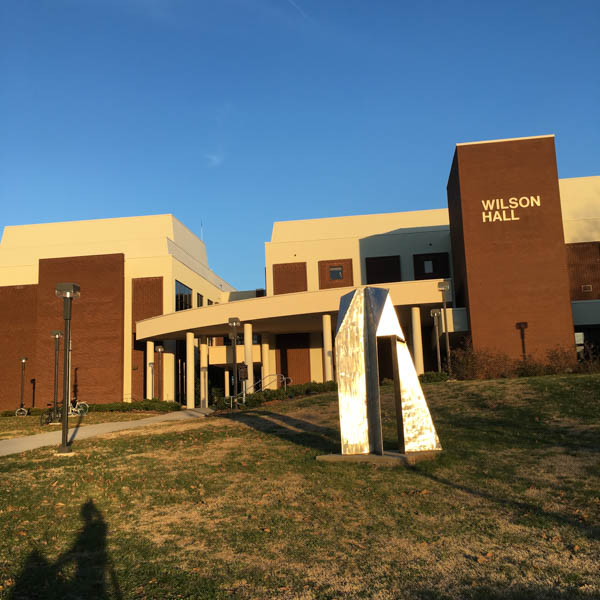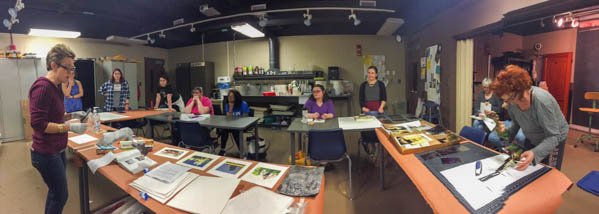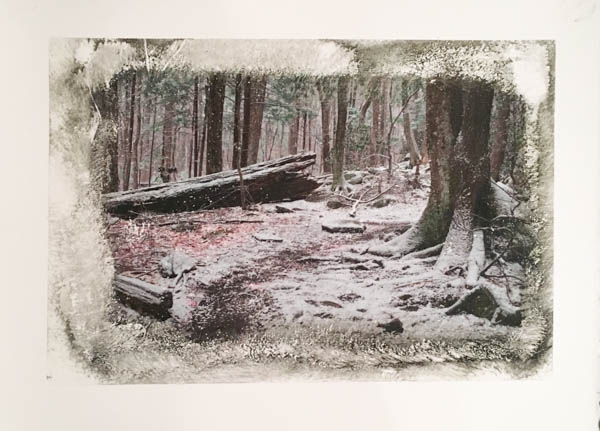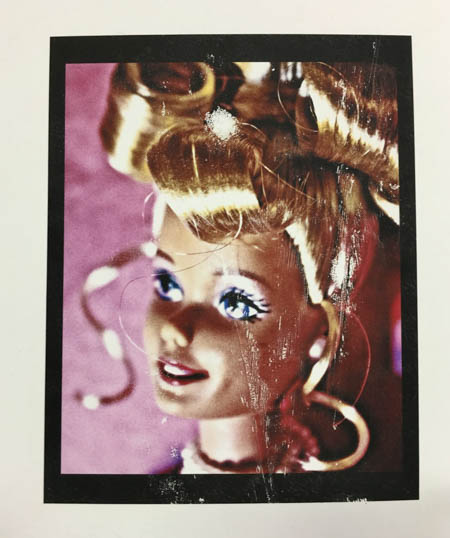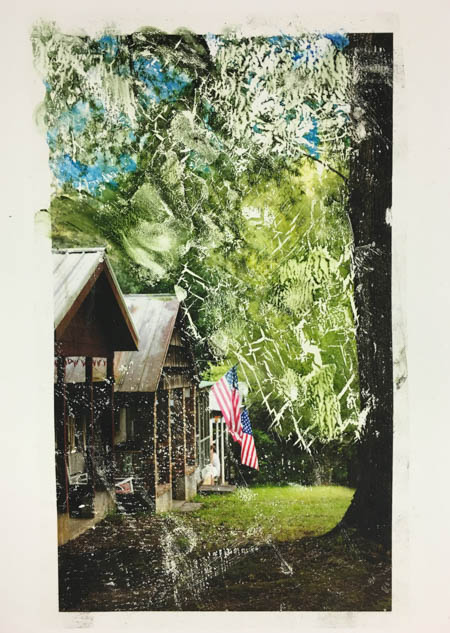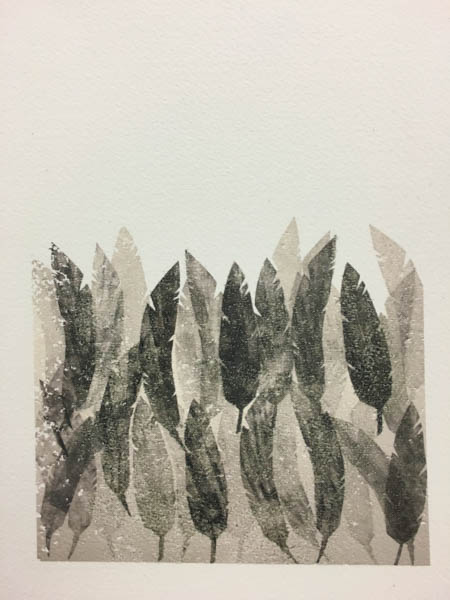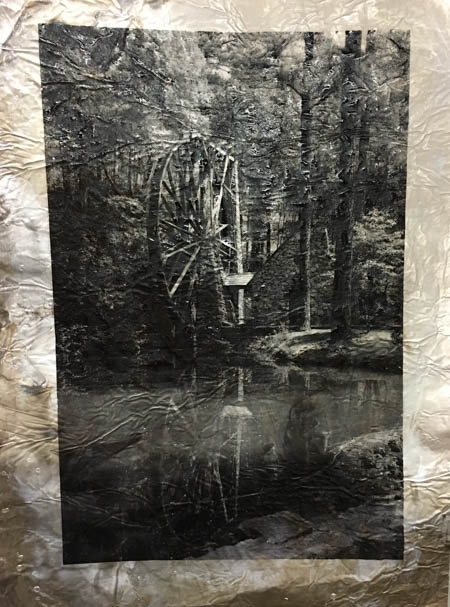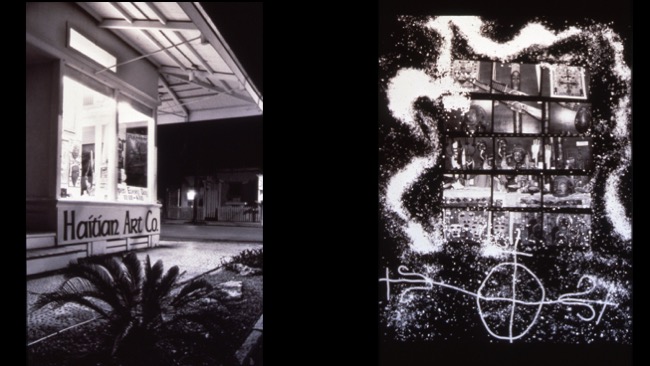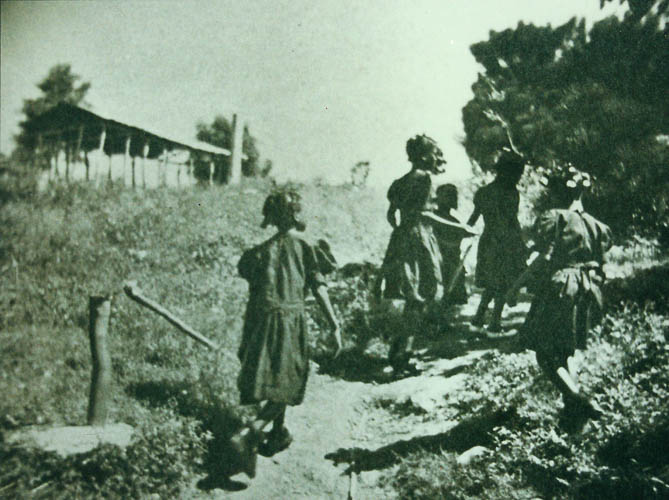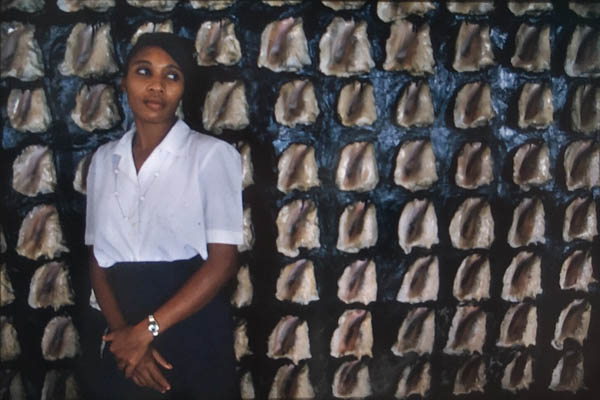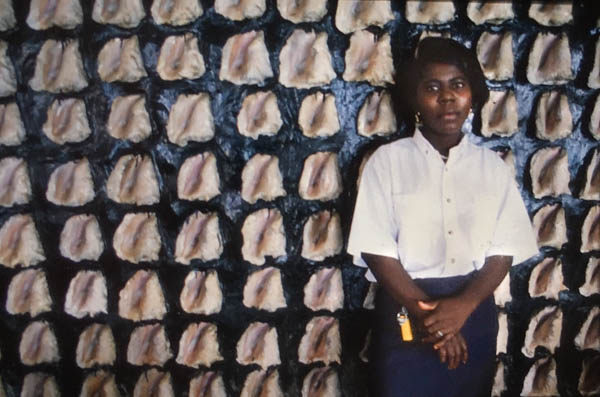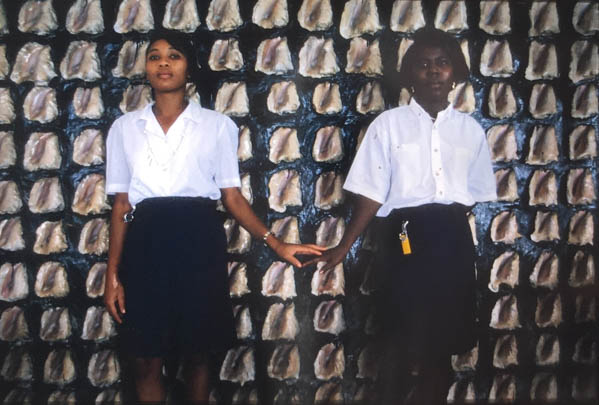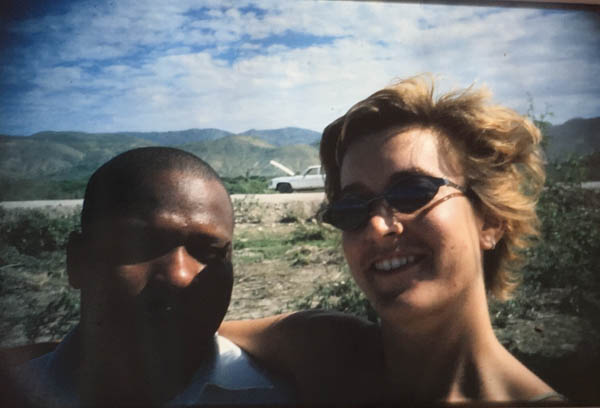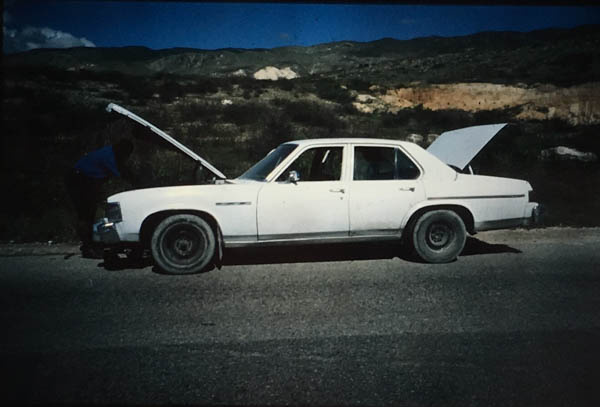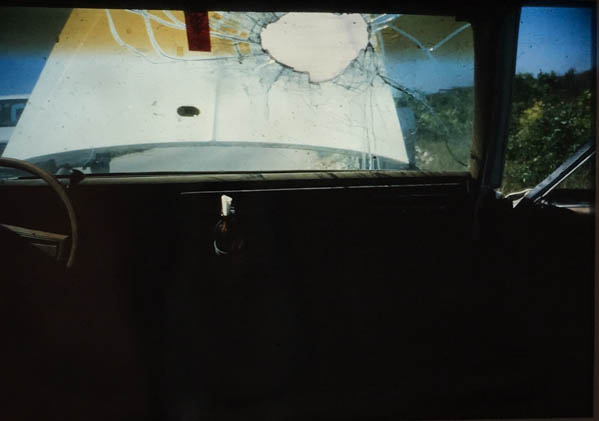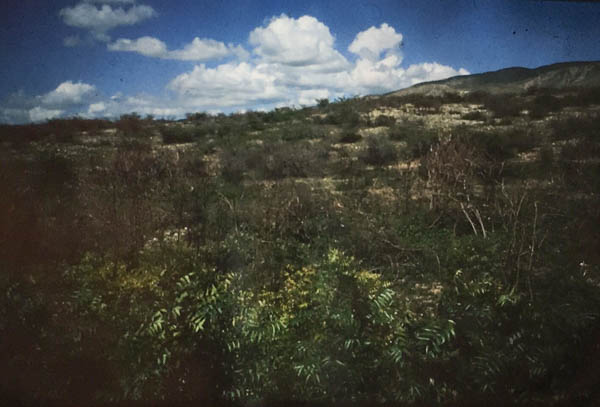So, it’s no secret that I have thing for working with metal these days. My most recent work are images transferred onto large metal substrates, custom made from heavy duty aluminum foil, distressed in the dishwasher. A few months ago, I started experimenting with cooking aluminum in a turkey roaster to get an aged look to the plates. There is some resemblance of control when purposefully distressing aluminum in this fashion…but not always…and it’s that element of chance that makes this process so exciting to me!
Before I worked with items such as cardboard, bubble wrap, plastic stencils and textured fabrics to create one of a kind substrates…and I had some really great results. But what kind of imagery can you get when using natural plant material? Will the shapes of leaves be present? Will the plant material simply disintegrate in the cooking process? Pictured below is the plant life I cooked up.


And here are more of my results from my cooking session with plant material.
And while it’s always interesting to see the results from the cooking process, here’s where the fun really begins…that of matching substrate to image!
Below are several examples visually detailing the process of matching image to substrate. The individual aged plate is on the left, original image is in the center and the combination of the two are on the left.

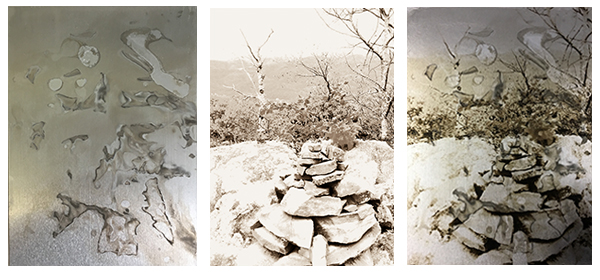
The following are final results after transferring image to plates. These have yet to be enhanced with oil paints…but it won’t be long until they are. All I know is that I’m ready to do so much more of these!
I found that I really loved working with monotone type images and those with lots of negative space so the aging of the plates come through. I also was quite drawn to those that became more abstract. It was quite fun to line up patterns in plate to colors and lines in images…creating a new version of the landscape!
Feel free to contact me if you have any questions. And as always…thanks for hanging in there!
~jz

